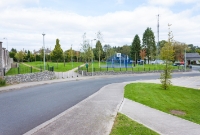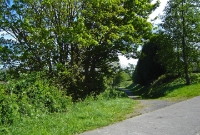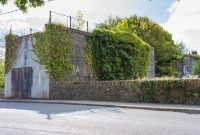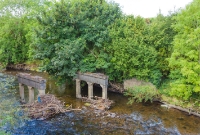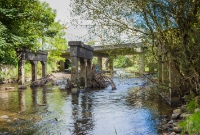Castlecomer
Castlecomer, Co.Kilkenny, was the terminus of the last ever proper branch line to be built in Ireland, when the Great Southern & Western Railway opened a line just north of Kilkenny on the Portlaoise via Abbeyleix line to the coal mining town of Castlecomer in 1922. The branch lost its passenger service only 10 years after opening, however it remained open for coal and general goods until January 1963, closing along with the Portlaoise to Kilkenny line. The corrugated iron station building and single platform at Castlecomer Station are now long gone, the site now occupied by the 'Railway Garage'. The trackbed of the coal mine extension from the station to the coal mines outside Castlecomer town is now a footpath.


